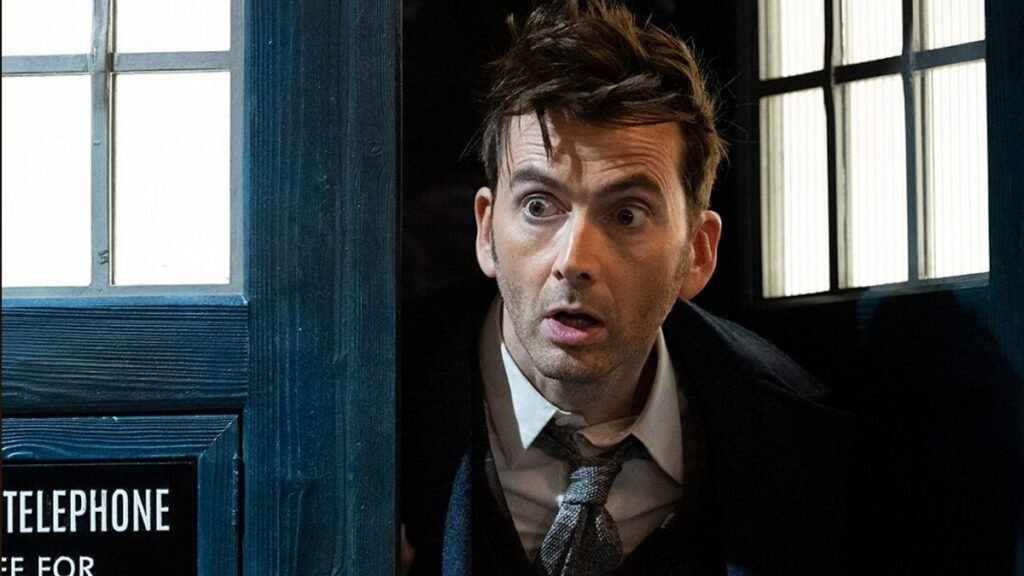
Why “Mad Men” Stands Out in the Golden Age of Television
In the vast expanse of the television landscape, where marathon viewing has become a way of life and suspenseful endings leave us hanging on the edge of our seats, there is one series that reigns supreme – “Mad Men.” This mesmerizing show is more than just entertainment; it’s a portal to a bygone era of glitz and turmoil in the advertising world of the 1960s. With its meticulous attention to detail, stellar ensemble cast, and gripping plot twists, “Mad Men” has carved out its own unique niche in TV history.
At its heart, “Mad Men” boasts a gallery of intricate characters, each one a multifaceted gem glittering amidst the sleek facade of Madison Avenue. From the enigmatic Don Draper to the determined Peggy Olson, every character is intricately developed, brimming with hidden depths and motivations that keep us guessing from episode to episode. As we follow their tumultuous paths through love affairs, personal tragedies, and professional triumphs, we find ourselves irresistibly drawn into their world – cheering them on as they navigate through obstacles and setbacks. As one astute critic observed: “In ‘Mad Men,’ reality often blurs with illusion in an enthralling dance that leaves viewers spellbound.”
The Complex Characters of “Mad Men”
Immersing oneself in the realm of “Mad Men” is akin to embarking on a bewildering journey through a labyrinth of enigmatic personalities, each as intricate as they are enthralling. From the inscrutable Don Draper to the formidable Joan Holloway, every character presents itself as a perplexing enigma waiting to be deciphered, their hidden depths and contradictions slowly unraveling before our eyes like an unpredictable burst of color.
Observing these characters evolve and interact feels like observing a symphony of human behavior at its most raw and unfiltered state, with their virtues seamlessly intermingling with their flaws to create a captivating mosaic of identities. As eloquently expressed by critic Matt Zoller Seitz, “The characters in ‘Mad Men’ are so intricately drawn and authentically portrayed that they transcend mere fictional constructs and instead become living embodiments of another era.” It’s impossible not to be emotionally invested in their victories and setbacks as they navigate the turbulent waters of 1960s America with grace, wit, and sometimes heart-wrenching consequences.
Ultimately, the allure of “Mad Men” does not solely lie in its glamorous portrayal of the advertising world or its stylish retro aesthetics but rather in the diverse tapestry of individuals who inhabit its universe. They are flawed yet relatable, imperfect yet undeniably human in a manner that strikes a chord deep within us. As we accompany them on their tumultuous journeys, we are prompted to contemplate not only our own lives but also the complexities that define the shared human experience – showcasing how exceptional television has the ability not just entertain but also enlighten us about life’s intricacies along the way.
The Intriguing Storylines of “Mad Men”
If you’re seeking a series that will keep you guessing at every turn, “Mad Men” is the ultimate choice. Its storylines are like a whirlwind of surprises – each episode brings new twists and revelations that will leave you breathless. From Don Draper’s enigmatic past to Peggy Olson’s journey in the male-dominated world of advertising, every moment is filled with suspense, drama, and unexpected plot developments that will grip your attention.
What sets “Mad Men” apart is its seamless integration of real historical events into the narrative. Set in the tumultuous 1960s, a time of great social change, the show brilliantly intertwines these events with the characters’ lives. As one critic aptly noted, “The blend of history and fiction in this show brings the era to life in a captivating and thought-provoking way.” Whether you’re a history enthusiast or simply enjoy period dramas, “Mad Men” offers an enriching experience that delves deep into human nature and societal complexities.
Amidst a sea of mindless entertainment on TV today, “Mad Men” shines as an intellectually stimulating masterpiece that transcends mere viewing pleasure. Its compelling storylines challenge us to reflect on our own beliefs and values, fostering introspection and empathy within us. Like Alan Sepinwall once said, “Great TV has the power to broaden our horizons and elevate our understanding,” and “Mad Men” achieves just that – cementing its status as an everlasting gem in television history.
The Stylish and Timeless Aesthetic of “Mad Men”
Entering the realm of “Mad Men” is like stepping into a whirlwind of sophistication and nostalgia, where sleek suits and elegant dresses dance amidst a haze of cigarette smoke. The meticulous attention to detail in every set piece, costume, and prop catapults viewers back to the bustling streets of 1960s Madison Avenue. Watching Don Draper exude confidence as he navigates the corridors of Sterling Cooper with his timeless cocktail in hand leaves you yearning for that same level of suave charm in your own daily routine.
The allure doesn’t stop there; mid-century modern furniture, vibrant color schemes, and flawlessly styled hairdos create a visual spectacle that rivals even Don Draper’s undeniable charisma. Matthew Weiner aptly noted that “Mad Men is not a time capsule,” hinting at the subtle yet persistent societal pressures depicted throughout the show. These chic aesthetics are more than just eye candy they serve as a mirror reflecting both the glamour and intricate complexities woven within the fabric of that era.
The Impact of “Mad Men” on Pop Culture
Mad Men” didn’t just tipt into the world of television; it crashed in like a hurricane and left an unforgettable imprint on pop culture. From the fashion frenzy it unleashed to the sudden obsession with mid-century modern aesthetics, the show’s impact stretches far beyond the confines of the small screen. As costume guru Janie Bryant once mused, “Clothing is a vital piece of the puzzle.” And boy, did “Mad Men” piece together a mesmerizing puzzle.
The series’ depiction of 1960s advertising milieu wasn’t just entertainment– it was thought-provoking, challenging viewers to reevaluate their own beliefs and values. Critic Matt Zoller Seitz aptly described it as “a contemplation on a zeitgeist struggling to find its form.” And find its form it did, drawing audiences into a world that was both captivating and suffocating. Don Draper’s mysterious allure and Peggy Olson’s journey to empowerment transcended mere storytelling; they became cultural symbols sparking discussions on gender roles, power dynamics, and chasing after the elusive American Dream. Oh, what a whirlwind of influence a TV show can unleash!
The Brilliant Writing of “Mad Men”
In the vast realm of TV shows, there exist those that amuse, those that enthrall, and then there’s “Mad Men.” This show is not merely a showcase of breathtaking visuals and flawless acting- it’s a storytelling masterclass orchestrated by brilliant minds lurking behind the curtains.
Every episode is meticulously sculpted, with dialogues sharp enough to pierce through one’s soul and plot twists that leave viewers gasping for breath. Matthew Weiner, the maestro behind “Mad Men,” once remarked, “I believe that when you construct a world that feels both familiar yet foreign, you have succeeded as a writer.” And indeed, he struck gold with this creation. The characters’ journey through the intricacies of 1960s America while grappling with timeless human dilemmas is nothing short of brilliance.
The allure of the writing in “Mad Men” lies in its ability to evoke laughter, tears, and contemplation- all within the confines of a single episode. As Roger Ebert famously opined, “Great movies become great because they establish connections.” The same sentiment holds true for exceptional TV series like “Mad Men.” Its profound exploration into the human psyche presented on screen stands as a testament to storytelling’s immense power. Remarkable TV shows possess an uncanny ability to lift us from our daily tribulations and transport us to realms where possibilities are endless- and in this aspect, “Mad Men” truly dazzles.
The Award-Winning Performances of “Mad Men”
The performances from the cast of “Mad Men” were akin to a fine aged scotch – smooth, complex, and deeply satisfying. Jon Hamm’s portrayal of the enigmatic Don Draper exuded a brooding charm that held viewers captive, while Elisabeth Moss as Peggy Olson brought a fierce determination that had us cheering for her every step of the way. Christina Hendricks as Joan Holloway showcased a mesmerizing blend of power and vulnerability that left us in awe. John Slattery once described them as a “compelling, intriguing group of actors,” performing like they were walking on a high-wire.
Vincent Kartheiser’s portrayal of Pete Campbell added layers to his character, making him simultaneously despicable and pitiable. January Jones embodied Betty Draper with the perfect 1960s housewife facade tinged with underlying discontent that lingered long after each episode ended. Each actor breathed life into their characters with such finesse that it comes as no surprise their performances have been showered with accolades. Bryan Cranston noted that great shows are fueled by great performances, and “Mad Men” was certainly no exception. It is truly these performances that transform a good show into a timeless masterpiece – leaving an indelible mark on television history for generations to come.
The Historical Accuracy of “Mad Men”
The minute intricacies, they matter so much, don’t they? And oh my, does “Mad Men” absolutely nail it when it comes to historical precision. From the sleek suits to the indoor smoking (imagine that in this day and age?), this show effortlessly transports us back to the 1960s. As esteemed historian Doris Kearns Goodwin fittingly remarked, “Watching ‘Mad Men’ is like stepping into a time machine and experiencing the era firsthand.”
But it’s not just the visual elements that make “Mad Men” historically spot-on. The show’s creator, Matthew Weiner, is meticulous about every detail, ensuring that even the language used and social norms depicted are authentic to the time period. As he once expressed, “I want people to feel like they’re eavesdropping on a very plush reality.” And indeed, we do feel like inconspicuous observers in that sophisticated Madison Avenue setting. The historical accuracy of “Mad Men” isn’t merely about reminiscing; it serves as a portal into a past era that still holds relevance for us today.
The Legacy of “Mad Men” in Television History
“Mad Men” stands as a trailblazer in the annals of television, its enduring legacy weaving a tapestry that still mystifies and intrigues the industry. The show’s enigmatic storytelling, intricate characters, and breathtaking visuals broke new ground, redefining the boundaries of what television could achieve. Alan Sepinwall eloquently captured its essence when he remarked, “The hour spent watching ‘Mad Men’ on Sunday is an hour well-spent a rarity in the vast landscape of television.”
The perplexing allure of “Mad Men” lies in its timeless appeal; it transcends eras to captivate audiences across generations. Its exploration of identity, power dynamics, and societal norms remains thought-provoking and pertinent, cementing its status as a masterpiece for all time. Matthew Weiner’s contemplation rings true: “‘Mad Men’ will etch itself into the annals of television history as a bold venture that probed deep beneath appearances.” Beyond mere entertainment, “Mad Men” has morphed into a cultural cornerstone that ignites dialogue and sparks inspiration for future storytellers.


